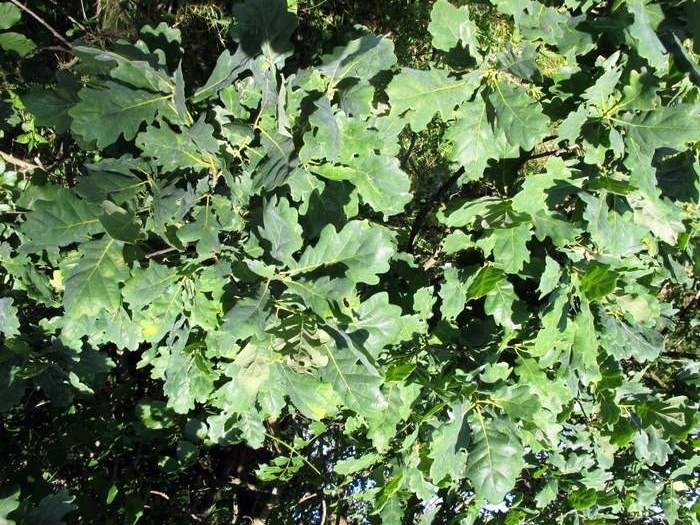Shinnery oak
(Quercus havardii)

Description
Quercus havardii (common names include shinnery oak, shin oak and Havard oak) is a deciduous, low-growing, thicket-forming shrub that occupies some two million to three million hectares (7,700 to 11,600 square miles) in the southern Great Plains of North America. Clones may reach hundreds to thousands of years old, although aboveground stems typically live only 11 to 15 years. Shinnery oak stems are usually 1 to 2 metres (3 feet 3 inches to 6 feet 7 inches) tall and codominate the plant community with mid- and tall-grasses, which are usually taller than the oaks. The specific epithet honors U.S. Army surgeon and botanist Valery Havard, who contributed much to the knowledge of southwestern plants. The word "shinnery" seems to be derived from chêne (French for oak), and not from the height of the plant. A low shrub to 2 metres (6+1⁄2 feet) or occasionally a small tree, Q. havardii forms large clonal thickets by extending rhizomes through the sandy soil where it is usually found. Rhizomes range from 3–15 centimetres (1+1⁄4–6 inches) in diameter and are concentrated in the upper 60 cm (24 in) of soil, although penetration depths of 9 m (30 ft) have been reported in shifting dunes. Lateral roots and woody rhizomes are widespread near the soil surface. At least 90% of shinnery oak's biomass is underground, and fortuitous root grafting is common. These underground stems commonly spread to form plants 3 to 15 m (10 to 49 ft) or more in diameter. Single clones are reported to cover up to 81 hectares (200 acres) and to achieve ages over 13,000 years. Shinnery oak is monoecious with both female and male flowers borne separately on the same plant. Male catkins are densely flowered, 1.5–3.8 cm long, and hang downward. Female catkins are 3–7 millimetres (1⁄8–1⁄4 in) long, contain 1 to 5 flowers, and are usually axillary on young shoots. Shinnery oaks are wind pollinated, and flowering occurs in the spring. Acorns develop in one year, maturing in the autumn. Acorns occur alone or in clusters of 2 or 3, and are 12–25 mm (1⁄2–1 in) long by 14–18 mm wide. A scaly cup covers about 1/3 to 1/2 of the nut. On average, acorn crops are produced in 3 out of 10 years. The leathery, highly variable leaves are grey green to olive green, have a lustrous upper surface, and are whitish and densely hairy below. The leaves are alternate, simple, with variable shape (oblong, ovate, or elliptical), and with wavy or shallowly lobed margins.
Taxonomic tree:







